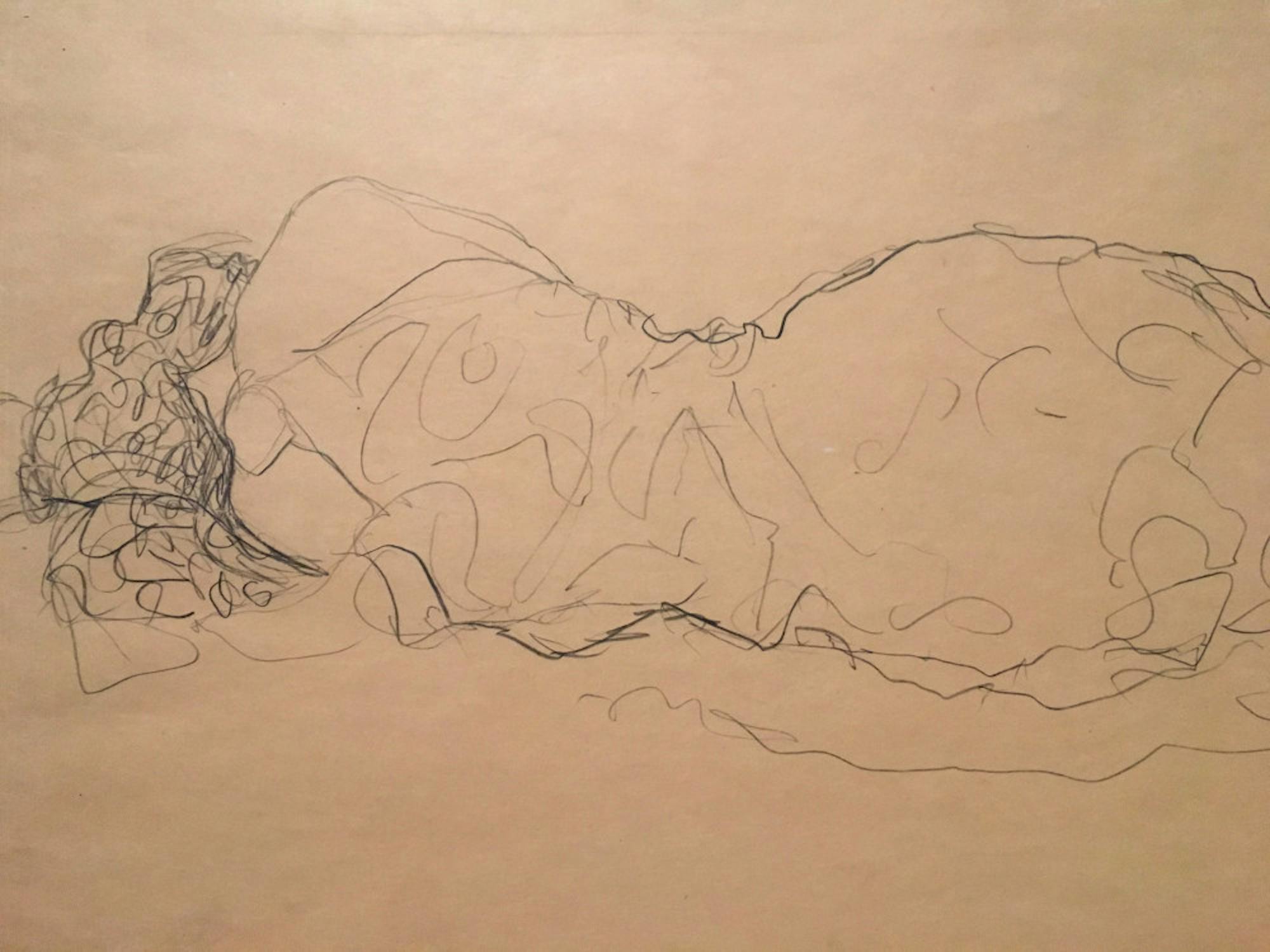"Klimt and Schiele: Drawn" at the Museum of Fine Arts (MFA), which runs through May 28, fascinatingly presents rarely seen sketches from two famous Viennese artists Gustav Klimt and Egon Schiele to commemorate the centennial of their deaths. These two artists influenced each other heavily during their careers, even though they were nearly 30 years apart in age. This leads to a cleverly planned exhibition that allows visitors to see the how the two artists borrowed ideas from each other. Their styles may be very different — Klimt has an ethereal tone to his sketches, Schiele a morbid tone — but there are many similarities between the two upon closer observation. All of the exhibited pieces are on loan from the Albertina Museum in Vienna.
Upon entering the dimly lit room that holds all of the exhibit's drawings, the viewer is confronted by a wall boldly stating "Klimt and Schiele: Drawn" in gold and black. Automatically, one thinks of Klimt's gold period classics, like "The Kiss" (1907–1908) and "Portrait of Adele Bloch-Bauer I" (1907). But who is this seemingly obscure Schiele? Mysterious and shadowy, he was a contemporary of Klimt who left his conservative art school to join the booming art scene in Vienna in the early 20th century. The two artists formed a friendship and shared their artistic visions but their sketches are distinctly their own, and the MFA does a good job at acknowledging this. For example, Schiele used watercolors heavily in his sketches and Klimt only dabbled with them. In his piece "Lady with Plumed Hat" (1908), Klimtuses black watercolor to highlight the woman's features and style.
The idea of presenting an exhibit on sketches seems like it could be underwhelming at first, but it is very interesting to see artists in the middle of the creative process. While these sketches may seem unfinished, they still delicately render the attitude of the characters depicted. There are many micro-themes in the exhibit, ranging from floral images to theater studies to portrait sketches, but the fascination with the human body seems to be the one theme that overlaps between the artists the most. The experiences of observing the artists' sketches of bodies are intimate in their own ways. Looking at these sketches feels like peeking into someone's journal or private sketchbook, skimming over the delicate details of their personal lives. It's obvious that these sketches were important to the artists, as they carefully chose their subjects, ranging from lovers to family members. The ones that come to mind automatically are Klimt's "Reclining Woman, Seen from Behind" (1917) and Schiele's "Female Lovers" (1915).
When it comes down to the way that the exhibition is set up, the room is split in two. On one side, Klimt's pieces can be seen, and on the other side, Schiele's. Placing works from both artists side by side may have made it easier for the average viewer to see just how much the artists influenced each other, but separating their works on different sides of the room leads the viewer back and forth across the exhibit to compare. In spite of this, separating the room into two does allow one to get a true understanding of their individual styles. Klimt loved soft images with femme fatale themes interwoven into his pictures. He shaded his sketches to perfection and often focused on the garments that his models were wearing, rather than their faces. Schiele, on the other hand, used bold images and colors. He liked to compress and manipulate space within his drawings, and most of his sketches had depressing undertones. His use of red and blue to create patchiness of the skin lent a sickly look to those that he drew.
"Klimt and Schiele: Drawn" is an exceptional show. There is an abundance of works to see, the themes allow you to learn about the artists and their lives, and the images are all aesthetically interesting. While the organization of the exhibit could have been done with a little more care, the quality on display makes up for it. It feels as if the viewer has been transported to the Albertina Museum in Vienna, sans the six-hour flight.
'Klimt and Schiele: Drawn' mesmerizes visitors at the MFA

'Reclining Woman, Seen from Behind' (1917) by Gustav Klimt is pictured.
Summary
While "Klimt and Schiele: Drawn" could have been slightly better-organized, the exhibit as a whole is engaging and aesthetically interesting.
4 Stars





